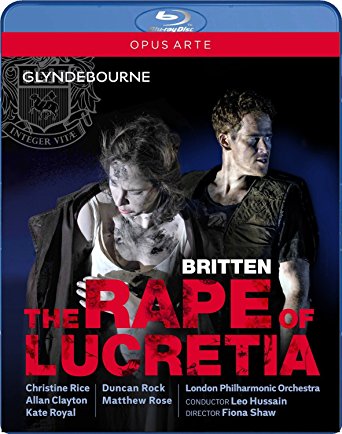Here are my Top Ten discs for 2016, of the 175 or so I reviewed during the year.
And here is the
list for 2015.
Illuminating Haydn
The third disc in Giovanni Antonini's
Haydn 2032 project with Il Giardino Armonico on Alpha Classics has the intriguing theme "Solo e Pensoso", which casts a new light on a composer we often think of more attracted to the social whirl than brooding, deep in thought. The long journey to the Haydn Tricentennial is on the right track.
Strong performances of sometimes great music
The three young musicians of the Neave Trio make a strong case for two works by teenage composers (Korngold and Bernstein), as well as a third, mature, work by Foote. Though only two of these - the Korngold and Foote - are true masterpieces, all of this music keeps our interest, thanks to the fine playing and the fine sound and presentation by Chandos. Watch these three!
Geniality and wit; virtuosity and passion
Sir Andras Schiff plays and conducts masterworks of Beethoven, Schubert and Mozart in this outstanding Blu-ray from C-major, filmed at the Great Hall of the Salzburg Mozarteum Foundation in January of 2015. His boundless charm is the keynote of the whole project.
A personal and progressive sound
A second set of the complete Grazyna Bacewicz String Quartets in four years is surely a sign that the Polish composer is finally coming into her own. The Silesian Quartet play with confidence and verve; this is another fabulous release from Chandos.
The title of my review of Cristina Spinei's fine new disc from Toccata Classics is pretty obscure. It's from Anthony Powell's discussion of the painting by Poussin whose title - A Dance to the Music of Time - Powell used for his cycle of novels. The patterns that emerge from Spinei's music are always moving, and always fascinating.
The Purcell Choir and Orfeo Orchestra under György Vashegyi perform four Grands Motets by the great French composer Jean-Joseph de Mondonville, three of which seem to be recording premieres. This Glossa disc includes possibly the most ravishingly beautiful music I've heard all year.
Put Ingela Brimberg on an empty stage with a black fright wig and an axe, and she would provide a good percentage of the sheer horror we get from this performance. She's that good. But add the outrageously over-the-top staging of Carlus Padrissa and the urban theatre group La Fura Dels Baus and you have something really memorable. Conductor Rumon Gamba keeps all of this lunacy (including that of von Hofmannsthal and Strauss) within proper bounds. This Norrlandsoperan Blu-ray from Unitel Classica is a triumph.
This Grand Piano disc is the first in a projected complete recording of the Cartas Celestes, the avant garde masterpiece by Almeida Prado, pupil of Messiaen, Boulanger, Foss and Ligeti. One is dazzled by how the composer lines up all of his stars, as well as the playing of the young Brazilian pianist Aleyson Scopel.
The Chapelle Royale in Versailles is a splendid venue for the sublime music of Claudio Monteverdi. This is an awesome performance by The Monteverdi Choir and the English Baroque Soloists, under the direction of a special musician, scholar and human being, Sir John Eliot Gardiner.
Harry Christophers and The Sixteen explore three themes in this special disc: tradition, faith under fire, and craftsmanship. Though there is incredible musical ingenuity and serious scholarship taking place here, in the end it's the beauty of the music that counts. In the words of Hugo von Hofmannsthal: “Depth must be hidden. Where? On the surface.”
So there's my list. A good year for classical music recordings, I think, though a disastrous year for the musicians themselves. We've lost so many already, and I hope that particular list is complete with two weeks to go in 2016. I've only recently been paying attention to Historical Re-Issues, so I'll be posting some of my favourites from that genre in my next post. Also, I've reviewed a number of jazz discs, and I'll highlight my favourites as well.

















































